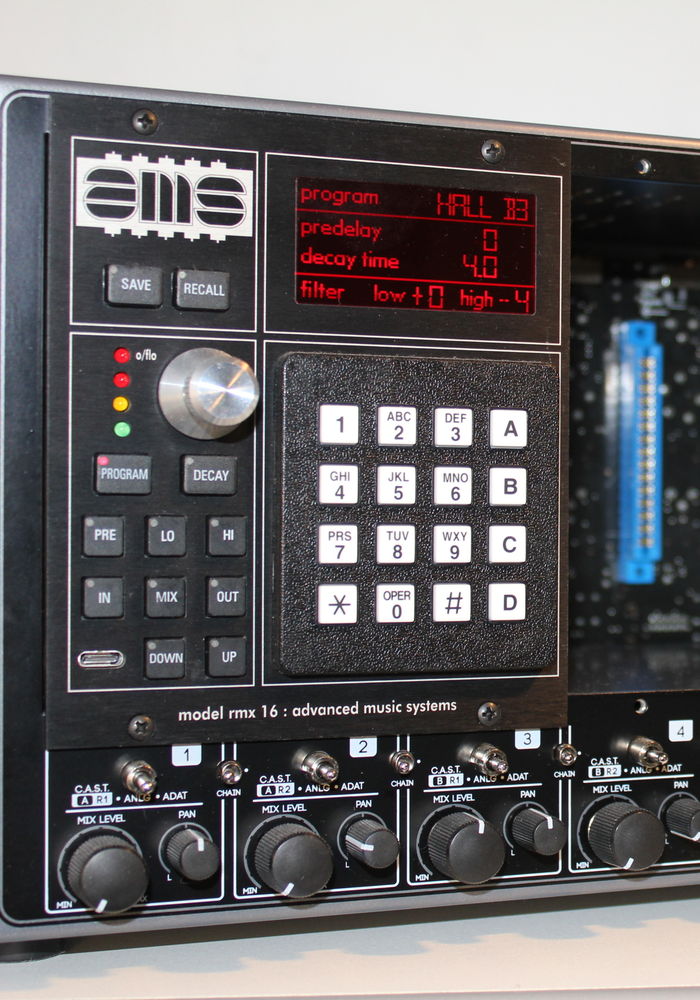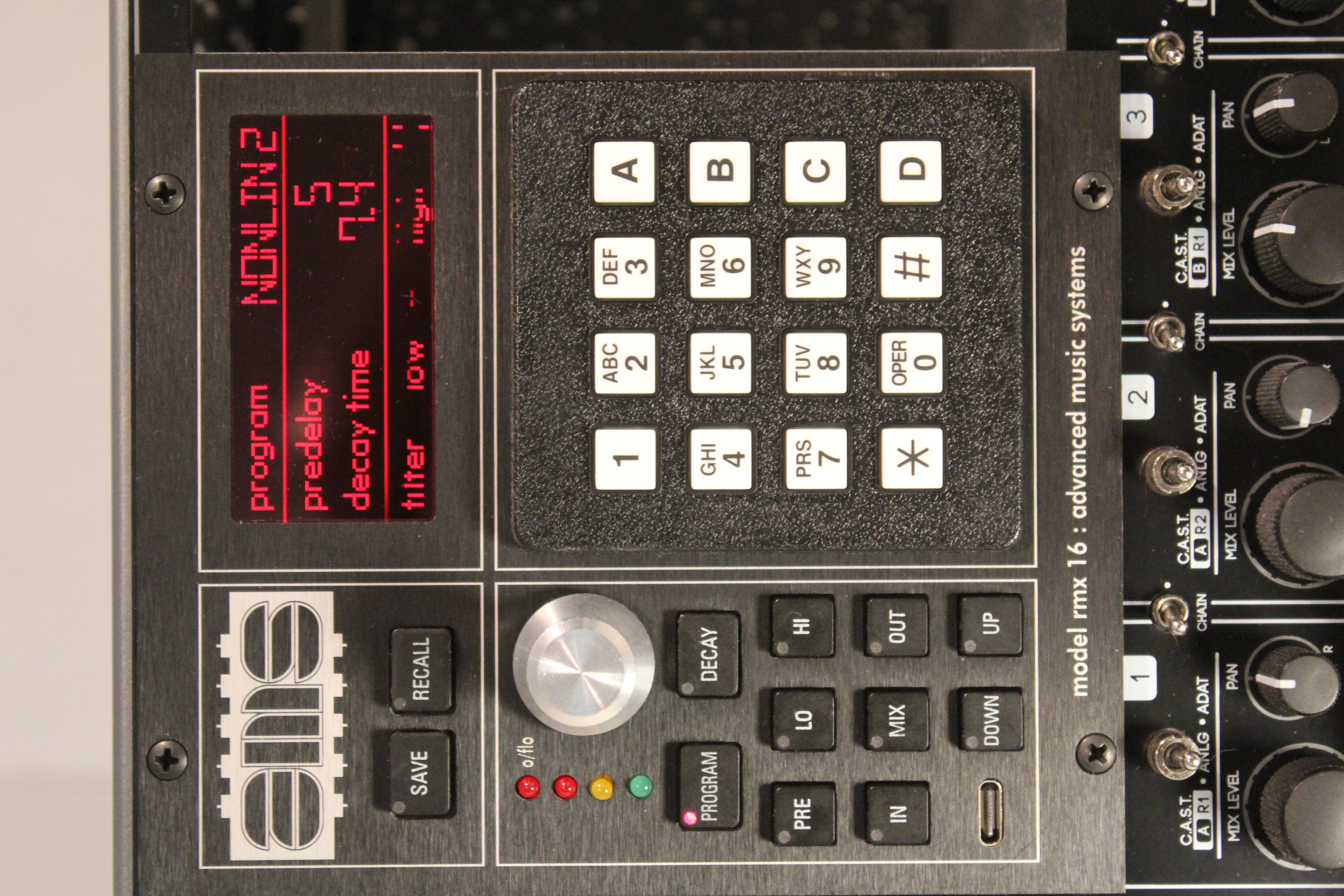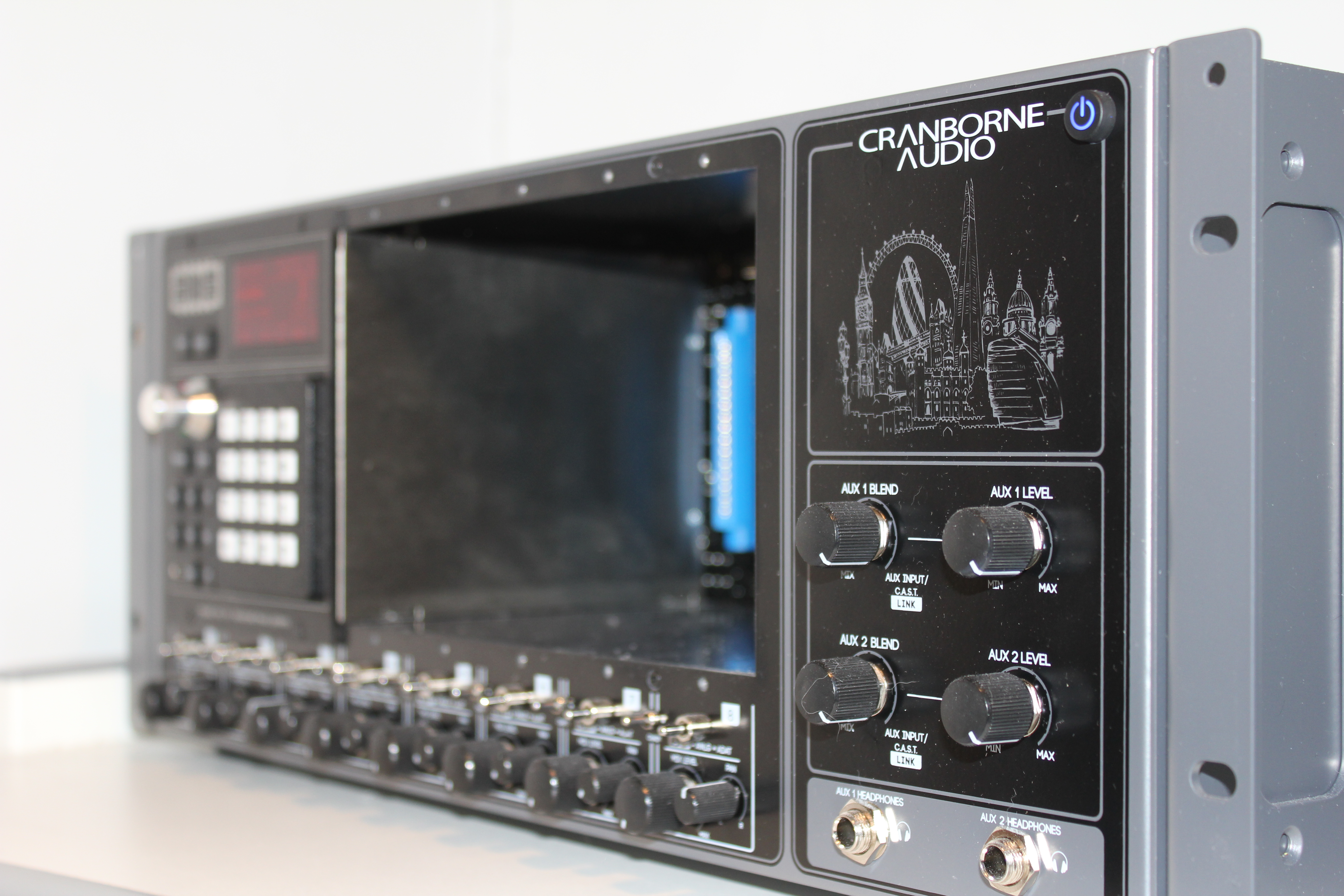In a previous review, I touched on Lexicon and how it was responsible for the sound of the '80s; but where the Lex was known for vocals with big plate and big spacey reverbs, the RMX was most definitely better known for its shorter Ambient, Room and Non Linear Programs, perfectly suited to big drum sounds. So the fact AMS Neve were bringing this unit back – in 500 format – was very exciting to me.
In 1981, AMS (Advance Music Systems) launched the RMX16 after already making a name for themselves with the DMX 15-80 - the world's first 15-bit digital delay line. But the thing is, this new reverb unit had an algorithm in it called non linear which sounded just like gated reverb. Every studio engineer wanted some of this new sound, and pretty soon every studio had one – and for good reason!
Being that these algorithms were a simulation, and not based on sampled environments like today's modern reverbs, they had space around them, they were based on the idea of what reflections might do in a given room or hall - but above all, they were all incredibly musical. And just like Lexicon, the AMS had its own characteristics and admirers.
During the '80s when I was on the road for the most part, this unit would sometimes find its way into touring FOH outboard racks and, provided the headline band's engineer was okay with me stealing a preset or two (there were only nine storage slots on the original unit), I would have yet more opportunity to play.
Sadly, they were built for studio use, and didn't adapt well to life on the road, often suffering cracked boards and dry joints - which is a huge pity because nothing ever sounded the same as an RMX16 - and up until recently, nothing ever had.
I recently changed my audio interface to a UAD Apollo, and have some very useful UA plugins at my disposal including the brand's AMS RMX16 plugin which I spent far more time playing with than I should have, when I was suppose to be writing a review!
The plugin is good - very good - and I could have written a review of that plugin alone, but there is something to be said for actually pressing the buttons and turning the dials. Clicking your mouse to engage the rotary encoder and then trying to drag it around is not quite the same as the original! Having said that, it did sound lovely and a really accurate substitution for this all time classic. But what of my review box, how does it fair against the original rack unit and UA's plugin?
I have a Cranborne Audio 500ADAT lunchbox style housing which is a handy bit of kit for 500 series modules as analogue summing box. You can get into the Cranborne either through a couple of TOSLink cables in and out or directly from the back of the unit via XLR; in my case, XLR to D-Sub 8-way cables attached to the Apollo insert and line-in D-Subs.
After much searching, I could only find one of my optical cables so I hooked it up via the XLRs. After replacing the plugin in the FX bus with Logic's I/O plugin from the utility menu, it was simple to just select the correct line out and returns back in to the Apollo and then press the ping button.
In Logic, just remember to go to preferences, audio, and then in the audio: general, and page, making sure compensation is set to 'all' so everything will be in sync. Also, very important is that you set the mix value to zero, otherwise the ping is subject to whatever effect is currently on the screen, so will not give a true compensation value for the round trip signal path.
The RMX - like the original - is mono in, and left/right out. The 500 module is three units wide and uses the first slot for the mono input and left out, and the third slot for the right out. With four small crosshead retaining screws to hold it in place, that was pretty much it. Plugging it up just like the original unit was very satisfying, and I could feel my cheeks aching from all the incessant smiling. I powered up the Cranborne!






